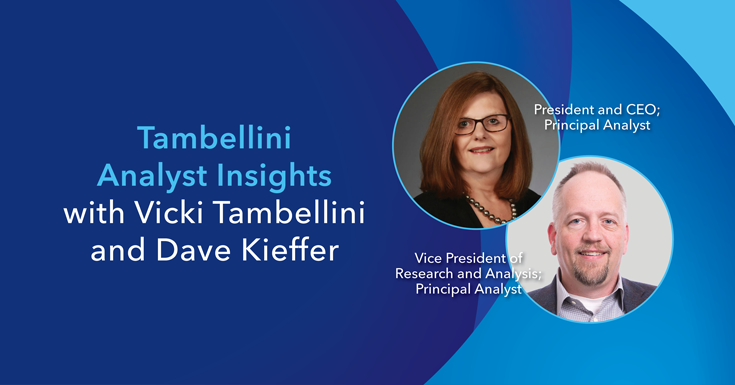The Ohio State University Walks Away from Workday Student
Principal Analyst
Principal Analyst

Tambellini learned on Wednesday, December 1st, that The Ohio State University (Ohio State) has decided not to move forward with Workday Student at this time. Ohio State’s statement includes an acknowledgment that their implementation of Workday’s Finance and Human Capital Management (HCM) products has left significant system and process optimization work for the school to do. It is clear that any effort to restart with Workday Student or switch to another product is years in the future.
Ohio State’s position as an early adopter of the Workday Student product as a large, complex R1 institution presented a significant but calculated risk for the institution. Workday also assumed risk when including Ohio State as an early adopter of the student solution. Early adopter programs require substantial resources, commitment, and trust in the relationship. The immense effort to contribute to the product design by Ohio State was also a significant investment that seemed to indicate the ability and willingness to see the implementation through its target of a 2023–24. (We note that this was the second timeline for implementing Workday Student after a delay in 2019 based on available product functionality for a complex R1 institution.)
Ohio State is not the only institution to have completed a Workday Finance and HCM implementation then decided not to move forward with the Workday Student product. The decisions are notable because Tambellini Group research shows that through 2020, 85% of US institutions select finance, HCM, and student solutions from the same vendor. When institutions cannot or do not select core administrative solutions from a single vendor, there are implications for IT, users, and costs for the institution.
What Is the Impact on the Student Systems Solution Market?
The critical question is: What is the impact on the student systems solution market? We expect Ohio State’s decision to cause institutions to look deeper at the availability of functionality offered and to rely less on vendor product roadmaps for student systems.
If large, complex institutions wait for Workday to demonstrate the availability of functionality required for production use of the solution, there could be a reduction in new subscriptions for several years in this market sector. Many institutions have already determined that unless their student system is at risk of failure, being an early adopter is not possible due to the resources and risks required. The Ohio State decision also highlights that when public institutions invest in high-profile projects, failure of any kind is notable. The impact may delay other institutions in their pursuit of a new student system.
Workday is not the only vendor bringing a new student solution to market. Oracle and Thesis are also developing new solutions. Oracle Student Cloud will be available for undergraduate programs in late 2022. It will likely be 2026 before a complex R1 institution is live on all Oracle Student Cloud modules. The Thesis student solution is also delayed for the US market. Required functionality for medium-sized institutions may be available in 2023.
Preparing for Significant System Changes
Tambellini is not familiar with Ohio State’s current leadership. However, significant system changes require the long-term commitment of institutional leadership. This level of change is challenging, and sustaining it as long as Ohio State has is even more difficult. Institutional success requires aligned leadership, culture, funding, and plans.
Tambellini strongly recommends that institutions perform significant due diligence when assessing the fit of any major application, especially a student product, to ensure alignment with institutional requirements and reduce the risk of a delayed or failed implementation. Institutions also need to assess the level of process change required to adopt new solutions and their ability to sustain the commitment to the change throughout the effort.
Need help selecting a new system or solution or navigating change on your campus? Explore our Technology Evaluation and Selection and Change Management services and contact Tambellini Group to learn how we can help today.
References:
Optimizing our Administrative Systems for the Future | IT@OSU
You May Also Like:
- Tambellini StarCharts—visual guides that compare critical higher education systems based on usability and innovation.
- 3 Questions to Consider When Evaluating New Technology in Higher Education blog post
- Tips for Getting Started with Change Management in Higher Education blog post
Categories
Share Article:

Additional Authors:

Other Posts From this Author:
© Copyright 2025, The Tambellini Group. All Rights Reserved.